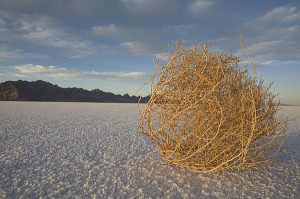Update frequency poll
Hi everyone
A bit of housekeeping today. I’d like to figure out what my audience would like from the blog. My posting schedule varies from every day when I am feeling productive, all the way down to not posting for several weeks or months.
One thing I have noticed is that I get a lot more traffic when I post every day.
However, in my own blog-reading habits, I don’t normally want to see daily updates (I find they clog my inbox and rss reader). I much prefer a one to three posts a week schedule for almost all blogs I follow.
Of course, this blog is not all about me, but rather you, loyal readers. How frequently would you like to see new posts from me? I’d be really grateful if you could answer the poll below (just choose one of the options and click ‘submit’).
blogging earthquake expectations life in Japan living in Japan personal refugee
by sendaiben
leave a comment
Shock Therapy: how a geological event helped cement my minimalist leanings
This post was originally written for an ebook project that never happened. I’m happy to publish it here now.
Are you a wannabe minimalist? I was. It took a major natural disaster to change that.
I became interested in a minimalist lifestyle a couple of years ago. It started with Leo Babauta and Zen Habits, and progressed to Karol, Tynan, Baker, and others. It was appealing, and I spent hours reading articles, following blogs, looking at lists of possessions and checking out minimalist workspaces.
I didn’t actually do anything to change my life, but it was fun thinking about it.
I guess I had the desire but not the drive, the talk but not the walk. I suspect this may be very common, with a small core of people actually living a minimalist lifestyle, and a wider circle of spectators seeing the benefit but not taking action.
This all changed in March 2011. I was just getting ready to teach on an ordinary Friday afternoon when the fourth largest earthquake in recorded history hit the city I live in, doing substantial damage in itself and causing a devastating tsunami. Luckily my seven year-old students hadn’t arrived at the classroom yet, so I didn’t have to worry about them being hurt when everything in the room flew five feet sideways, including computers, tables, and bookshelves.
The earthquake lasted for about five minutes, which is about four and a half minutes too long for comfort. We’re used to earthquakes here, but they normally only last a few seconds. This one started, then got stronger and stronger, and everything just kept violently shaking for what seemed like forever.
After it finally stopped, I left the classroom and checked on some of our neighbors, then stood in a nearby park with other members of the community, all of us shocked into silence.
That evening I sat with my family in our large rental house by candlelight, surrounded by electrical appliances that no longer worked, huddling together for warmth under all our blankets and quilts.
The next day we foraged for food. Going through my daughter’s apartment, taking only food and water and leaving CDs, magazines, clothes, TVs, and furniture behind really made an impression on me. Likewise when we found all the shops closed and shuttered. Gas stations, chained up. Didn’t matter how good your credit was, how much money you had in your wallet.
We’re all just a couple of hours away from that.
That night, back at home taking stock, we received a couple of phone calls from friends and family abroad (I have no idea how they got through as the phone network was down) warning us about the unfolding nuclear accident in Fukushima. We live just under 100km away.
I made a quick decision based on a decision matrix taking into account what would happen under each of four scenarios: there were two variables, whether the accident was serious or not, and whether we left or not. The outcomes were, in turn:
1. the accident was not serious, and we stayed put: nothing happens
2. the accident was not serious, and we ran away: somewhat embarrassing and would cost some money
3. the accident was serious, and we stayed put: irradiation and mass panic when people realised what was happening
4. the accident was serious, and we ran away: safety and some monetary expense
There wasn’t much contest. I persuaded my family, we packed our cars, and we set off a couple of hours later, driving through the night and most of the next day until we got to relative safety in western Japan, several hundred kilometers and a mountain range away from the danger zone.
I locked our house and walked away from everything I owned that didn’t fit into a small bag. We got into the car and left forever as far as we knew.
And you know what? I didn’t care about any of it. For the four weeks we spent with relatives in Kanazawa, on the western coast of Japan, not once did I think of an actual thing we had left behind. Family? We took everyone with us. Friends? Yes. Students? Yes. Our stuff? Not once.
Not one piece of clothing, not one gadget, not one room of the (too) large house we rented.
And that’s when I became a real minimalist.
Just over two years after the event that changed everything, we are living in a small apartment (our rental house was structurally damaged and had to be knocked down), I haven’t bought anything physical for months (sadly, ebooks and music still draw my eye occasionally -I am not yet a digital minimalist), and I am consciously reducing the things I have left.
The next time we have to leave in the middle of the night, I’m hoping to be able to take everything with me.
blogging expectations Language learning materials online resources personal self-study
by sendaiben
2 comments
The daily practice
A short comment today. The concept behind this Bill Gates quote “most people overestimate what they can do in one year and underestimate what they can do in ten years” has been on my mind recently.
I’ve also seen it in my students’ and in my own life.
As one example, I recently started studying kanji again (you’d think I’d have this by now, after thirteen years in Japan) and have resolved to use Anki for 10-30 minutes in the morning each day before doing anything else. I have mostly kept on top of this and now after a couple of months I have done over six hours of focused kanji study*.
Doesn’t sound like much, but I am noticing the effects when reading and more importantly writing in Japanese.
The point is that seemingly insignificant daily habits can have a huge payoff. What are your daily habits?
*I’m using the Core 2000 and 6000 and JALUP RTK decks to study from.
Admin blogging google online resources video websites
by sendaiben
leave a comment
Google Currents
Do you remember when Google shut down their RSS application Reader earlier in the year? I was quite upset at the time, but have since started using Digg Reader and have come to forgive them in my heart.
Google has something called Google Currents that appears to have been around for a couple of years now. I think I have it on my Nexus 7, but I never really knew what it was until my friend Parin wrote about it on Facebook just now.
To cut a long story short, you can now subscribe to this blog on Google Currents, by following this link. Or for even more personal service, sign up for email delivery in the box at the top right of this page.
If you want to know more, including how to set up Google Currents to publish your content from WordPress, the video below is very clear.
Month-long hiatus
It’s been almost a month since I have posted here. It’s been a very busy four weeks for me, but I have made it out of the other side, a wiser and more experienced man.
This month I plan to write some posts about taking students abroad on study trips. I also received an excellent suggestion from a reader about consolidating my reviews, so will start on that project too.
Please consider signing up for email updates using the box on the right. Your personal information will never be shared with other people and you will receive each post on the blog by email, meaning you will never miss an update from sendaiben 🙂



